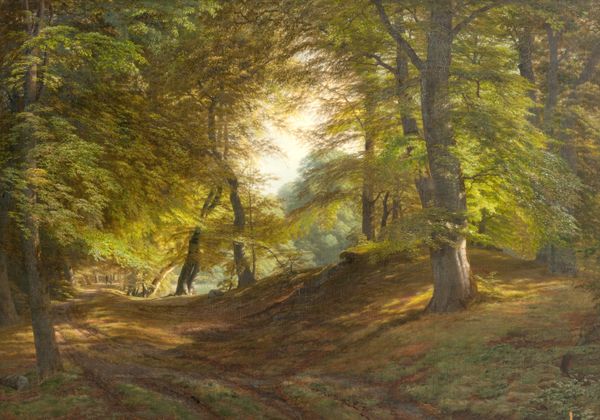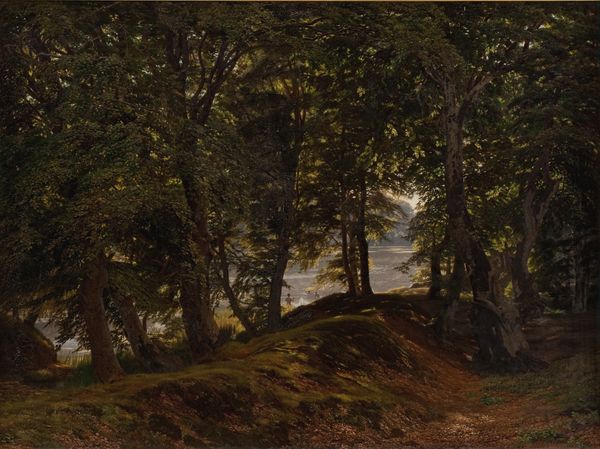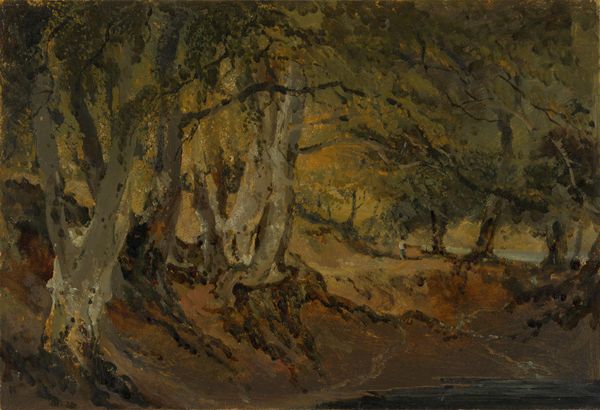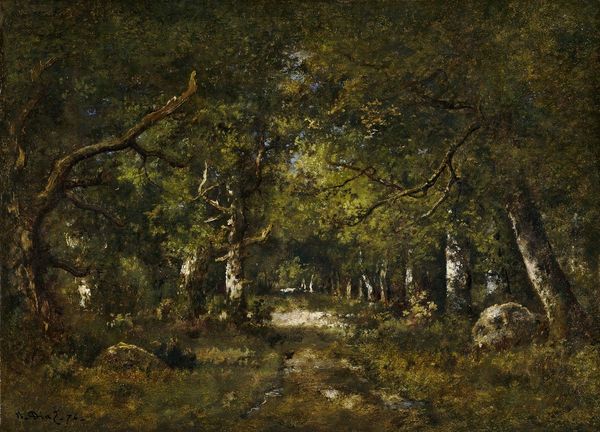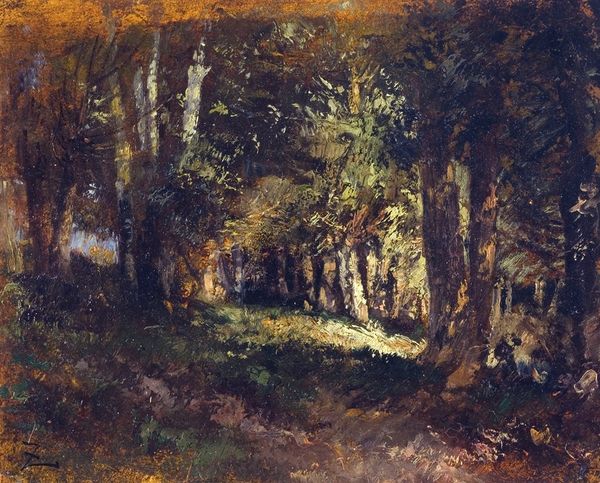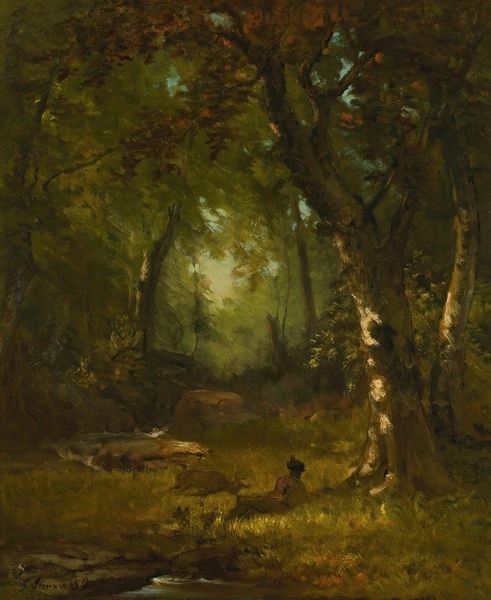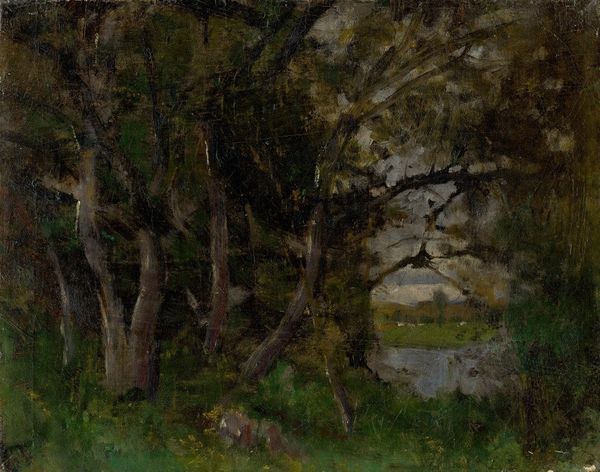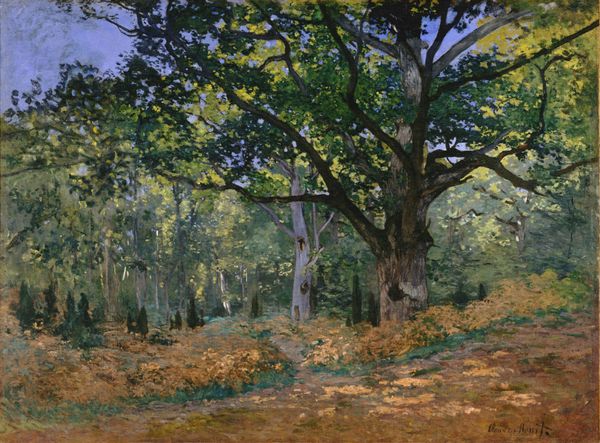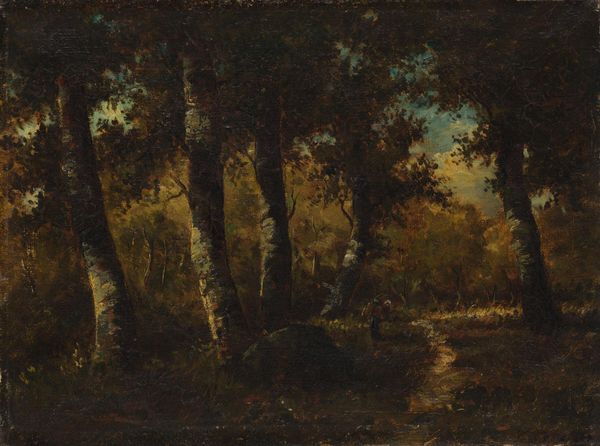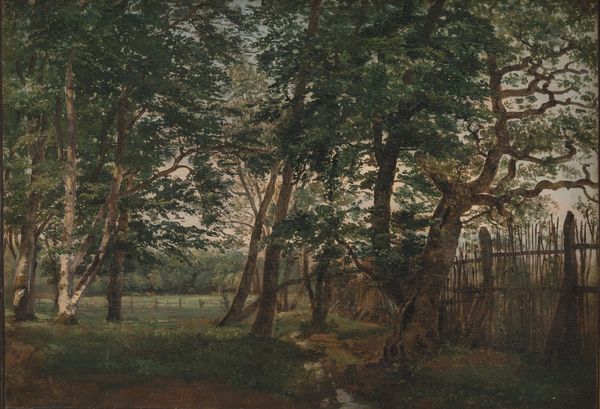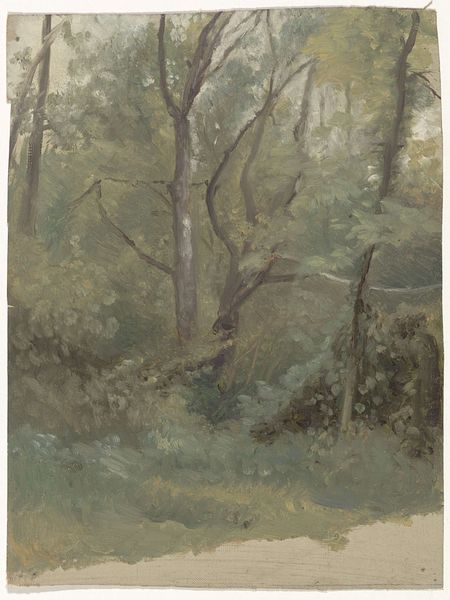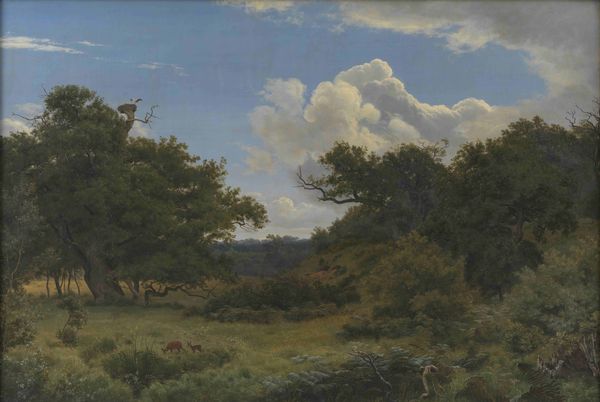
painting, oil-paint
#
painting
#
oil-paint
#
landscape
#
oil painting
#
romanticism
#
northern-renaissance
#
realism
Dimensions: overall: 40.6 x 67 cm (16 x 26 3/8 in.) framed: 52.71 × 78.11 × 4.76 cm (20 3/4 × 30 3/4 × 1 7/8 in.)
Copyright: National Gallery of Art: CC0 1.0
Editor: This is Frederik Sødring's "View of Bregentved Forest, Sjaeeland," an oil painting from around the mid-1830s. It feels very immersive, like I could step right into the woods. What's your take? Curator: What strikes me immediately is how this painting participates in the broader 19th-century phenomenon of romantic nationalism. The forest here isn't just a collection of trees; it’s a site laden with cultural and political significance. What role do you think landscapes played in forming national identity in Denmark at the time? Editor: That’s interesting. I hadn't considered the political side of landscape painting. Was there a specific movement influencing Sødring? Curator: Absolutely. Think about the rise of Romanticism across Europe. Artists were turning to nature as a source of spiritual renewal and as a way to define a distinct national character. Sødring, like many of his contemporaries, was part of creating a visual language for Danish identity. Consider also the institutions exhibiting his work - which public were they trying to reach, and with what ideas? Editor: So, the painting wasn't just about showing a pretty forest, but also about fostering a sense of shared Danish-ness? It’s almost like a form of propaganda, but in a subtle way. Curator: Precisely! And the specific choice of depicting the Bregentved Forest might also speak to the socio-political climate. Large estates and their surrounding forests represented not just natural beauty but also the landed aristocracy. Were there any contemporary discussions or debates around land ownership or usage? What kind of symbolism would people project onto images of the forest? Editor: That adds a whole new dimension. I am not sure about the political debates but thinking about the historical implications gives the image more resonance than if it were simply aesthetically beautiful. Curator: Indeed, the historical context is key. It is like stepping back to the moment where this painting acquired social power and value. Editor: Thanks so much for unpacking this artwork for me. Now, I won't just appreciate it, but also understand it!
Comments
No comments
Be the first to comment and join the conversation on the ultimate creative platform.
